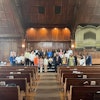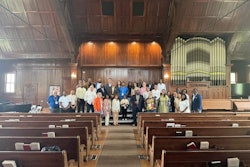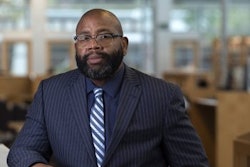DETROIT — Jennifer Carr knows she’s not the profile of a typical college student. The Detroit-area woman is 37 and has battled alcohol and heroin addiction. She’s also been homeless in the past and even now is categorized as someone who is precariously housed.
Carr’s story is not unusual. Studies suggest thousands of students at community colleges nationwide could be considered homeless or precariously housed, either because they have been thrown out of home, evicted, or sleep in a shelter, car or abandoned building.
“I didn’t have anywhere to go. I lived in my car. I didn’t have my job anymore and I got evicted from my apartment,” said Carr, who is in her first semester at Wayne County Community College District in Detroit. “I was ashamed I was living in my car.”
The few researchers who study the issue say there is scant data, but that they believe a surprisingly large number of college students are homeless. While some colleges have started to offer programs to help with housing or food needs, more needs to be done.
“For many people it’s a contradiction in terms— homeless college student,” said Paul Toro, psychology professor at Wayne State University. “If you’re a college student, you had to be with it enough to get yourself into college, so obviously you can’t be homeless.”
Sara Goldrick-Rab, a professor at Temple University, in Philadelphia, recently released a homeless national survey taken at 70 community colleges across 24 states.
“We’re the third study to find either 13 or 14 percent, so it’s consistent,” Goldrick-Rab said. “But at the same time, my bigger concern, and the thing that staggers me a little bit, is thinking this could be an underestimate.”
She also found that a third of the 33,000 students surveyed said they were “food insecure.”
Goldrick-Rab is concerned the numbers could be higher because electronic surveys are not the best way to reach students. Response rates were only around 5 percent.
Toro is doing similar research in Detroit, where so far, he has found about 5 percent of Wayne State students are homeless or precariously housed.
“Take Wayne State’s student population of around 30,000 and take 5 percent of it, you know, it’s a lot of people,” he said, “So you’re talking about 1,500 students, roughly, at Wayne State.”
Goldrick-Rab said a reason why the problem may go unreported is perception.
“We have sort of had this attitude of like, ‘The kids are all right’”she said, “We framed it as the solution, right, we framed it as you want to get out of poverty you go to college. I think we falsely told ourselves, ‘Well you’d be out of poverty then when you went to college.’ You’re not, not until you complete the degree and often times not for years after that.”
Carr said the stigma needs to change.
“You need to talk about it more, I mean you can’t judge people,” Carr said. “There’s people that want it so bad, they want to go to school so bad that they’ll do anything, so we definitely need to talk about it.”
Another challenge for some students is they might not even have a bed at night because the local homeless shelter would run out of room while they’re in classes.
“I know students this is happening to and I have seen it in my research,” Goldrick-Rab said.
Barbara Duffield, executive director of a nonprofit group that promotes success for homeless children, said the problem can be fixed.
“At the K-12 level we have a very strong federal policy, a very strong program, that has clear requirements for what school districts need to do to identify these students to connect them to resources and to keep them stable in school,” said Duffield, of SchoolHouse Connection. “We don’t have a similar federal policy yet that really takes the concept of the K-12, you know, single point of contact somebody to help you navigate, and adapt it to post-secondary.”
Duffield said colleges in Michigan and Florida do have a point of contact or programs for homeless college students.
The Helping Individuals Go Higher program at Wayne State is one. The program was founded by Jacqueline Wilson, wife of Wayne State President M. Roy Wilson. It gives a one-time award ranging from $500 to $2,500 to help students in emergencies such as needing to buy food, clothing or making tuition and car payments. The awards are mostly funded through private donations.
There are similar programs at Michigan State University and Eastern Michigan University.
Goldrick-Rab said more private charities or businesses should get involved with housing. She cited the Southern Scholarship Foundation in Florida, which for over 60 years has provided rent-free housing to homeless college students.
Carr, who is seven months sober and living in transitional housing, continues to pursue her education and eventually wants to study social work at Wayne State University.
“I just try to do what I need to do every day just to get up and go out and take care of stuff,” she said. “I don’t want to stay stuck. I want to move on.”









